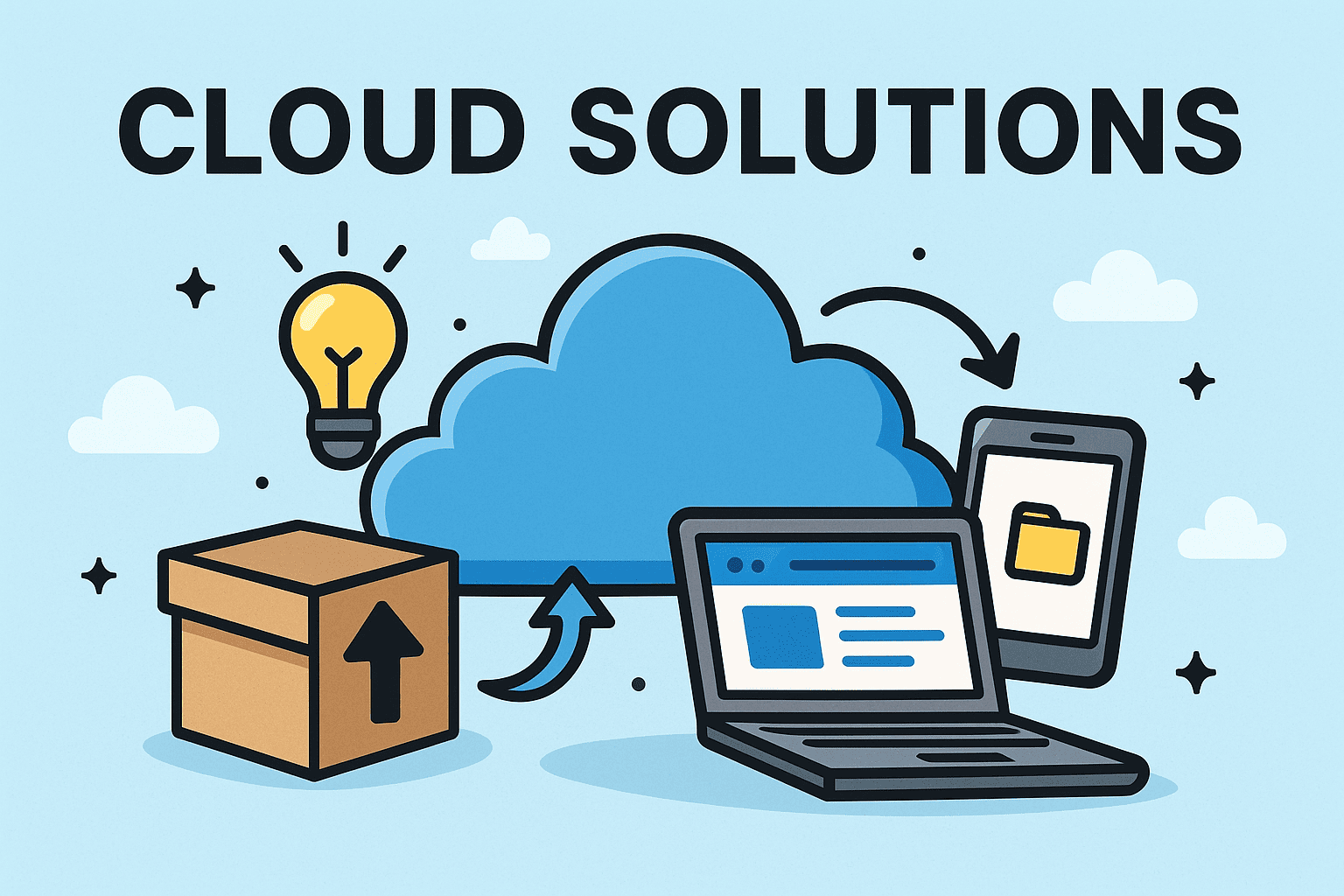Updated on October 8, 2025, by OpenEDR
Did you know that over 94% of enterprises now use cloud services in some form? From small startups to global corporations, organizations are shifting to the cloud to improve scalability, collaboration, and security. But what exactly are cloud solutions, and why are they so critical for IT managers, CEOs, and cybersecurity leaders?
Introduction: Why Cloud Solutions Are Game-Changing
In simple terms, cloud solutions are IT services delivered over the internet instead of being hosted on-premises. They cover a wide range of services like storage, computing power, applications, and cybersecurity tools—all available on-demand. For businesses, this means lower costs, increased flexibility, and stronger protection against evolving cyber threats.
What Are Cloud Solutions?
Cloud solutions refer to the delivery of computing resources—including servers, databases, networking, storage, software, and analytics—via the internet. Instead of managing physical hardware, companies leverage cloud providers to host and manage services remotely.
Key Types of Cloud Solutions:
Infrastructure as a Service (IaaS): On-demand access to computing resources like virtual machines and storage.
Platform as a Service (PaaS): Provides development frameworks for building and deploying applications.
Software as a Service (SaaS): Ready-to-use software applications delivered online (e.g., Microsoft 365, Salesforce).
Security as a Service (SECaaS): Cloud-based security solutions like endpoint detection and firewall services.
👉 Together, these services provide businesses with flexibility, security, and cost savings.
Benefits of Cloud Solutions for Businesses
Adopting cloud solutions goes far beyond convenience—it’s a strategic move that impacts performance, security, and growth.
1. Cost Efficiency
Pay-as-you-go pricing eliminates expensive hardware investments.
Lower maintenance costs since providers handle infrastructure.
2. Scalability
Easily scale resources up or down depending on demand.
Perfect for businesses with seasonal or fluctuating workloads.
3. Enhanced Security
Advanced encryption, firewalls, and compliance certifications.
Continuous monitoring and threat detection.
4. Collaboration & Productivity
Cloud-based apps allow teams to work from anywhere.
Real-time document sharing and communication tools improve efficiency.
5. Disaster Recovery
Automated backups and geo-redundant storage ensure business continuity.
Faster recovery from cyberattacks or system failures.
Cloud Solutions and Cybersecurity
Security remains a top concern for organizations adopting cloud technology. While cloud providers offer strong protections, IT managers must also implement additional safeguards.
Best Practices for Secure Cloud Solutions:
Implement Zero Trust: Verify every user and device accessing cloud resources.
Use Multi-Factor Authentication (MFA): Add an extra layer of identity security.
Encrypt Data: Ensure encryption both in transit and at rest.
Regular Audits: Monitor access logs and configurations.
Endpoint Security Integration: Extend malware and ransomware protection to all connected devices.
👉 With the right approach, cloud solutions can actually improve overall security posture compared to on-premises systems.
Public, Private, and Hybrid Cloud Solutions
Not all cloud environments are the same. Businesses must choose the model that best fits their goals.
Public Cloud: Services delivered over the internet by third-party providers (e.g., AWS, Azure, Google Cloud). Cost-effective and scalable but less customizable.
Private Cloud: Dedicated cloud environment for one organization. Higher security but more costly.
Hybrid Cloud: Combines public and private models for flexibility and control. Ideal for businesses handling sensitive data.
Multi-Cloud: Using multiple providers to avoid vendor lock-in and improve resilience.
Real-World Applications of Cloud Solutions
Cloud adoption is transforming multiple industries:
Healthcare: Secure patient data storage and telemedicine platforms.
Finance: Fraud detection, regulatory compliance, and mobile banking.
E-commerce: Scalable infrastructure for high-traffic sales events.
Education: Online learning platforms and virtual classrooms.
Manufacturing: IoT integration and real-time supply chain visibility.
Each industry benefits from tailored cloud strategies that improve efficiency and security.
Challenges in Adopting Cloud Solutions
While the benefits are significant, challenges remain:
Data Privacy Concerns: Ensuring compliance with GDPR, HIPAA, and other laws.
Vendor Lock-In: Dependency on a single cloud provider.
Downtime Risks: Service outages can disrupt operations.
Integration Complexity: Migrating legacy systems to the cloud.
Shared Responsibility Model: Businesses must secure applications and user access even if providers secure infrastructure.
Overcoming these challenges requires careful planning, governance, and vendor selection.
Future of Cloud Solutions
The cloud industry continues to evolve, with trends reshaping how businesses operate:
AI and Machine Learning Integration for predictive analytics and cybersecurity.
Serverless Computing to streamline application development.
Edge Computing to process data closer to the source for reduced latency.
Quantum-Safe Security as a defense against future threats.
Sustainability Initiatives with green cloud data centers.
👉 For CEOs and IT leaders, adopting cloud solutions is no longer a choice—it’s a strategic necessity.
FAQs: Cloud Solutions
1. What are cloud solutions used for?
They are used for data storage, software delivery, computing power, collaboration, and security services.
2. Are cloud solutions secure?
Yes, when combined with strong user-side practices like MFA, encryption, and regular monitoring.
3. What is the difference between SaaS, PaaS, and IaaS?
SaaS provides ready-to-use apps, PaaS offers development frameworks, and IaaS supplies infrastructure resources.
4. Which industries benefit most from cloud solutions?
Healthcare, finance, retail, education, and manufacturing are leading adopters.
5. Can cloud solutions reduce IT costs?
Yes, by eliminating the need for expensive hardware and reducing maintenance overhead.
Conclusion: Strengthen Your Business with Cloud Solutions
Cloud solutions empower businesses with scalability, efficiency, and stronger cybersecurity frameworks. From cost savings to advanced security, they are reshaping how organizations operate in the digital era.
For IT managers, CEOs, and cybersecurity leaders, the question isn’t whether to adopt cloud solutions—it’s how quickly you can implement them to stay competitive.
👉 Take the first step in securing your business with advanced cloud-powered security: Register Here
